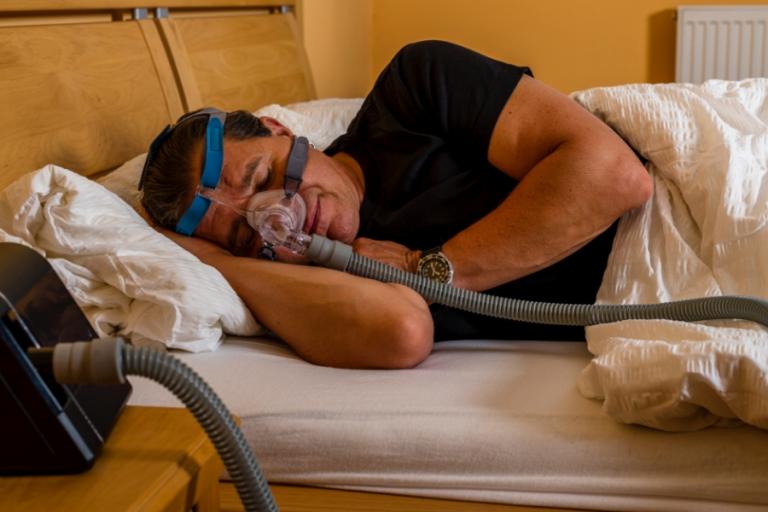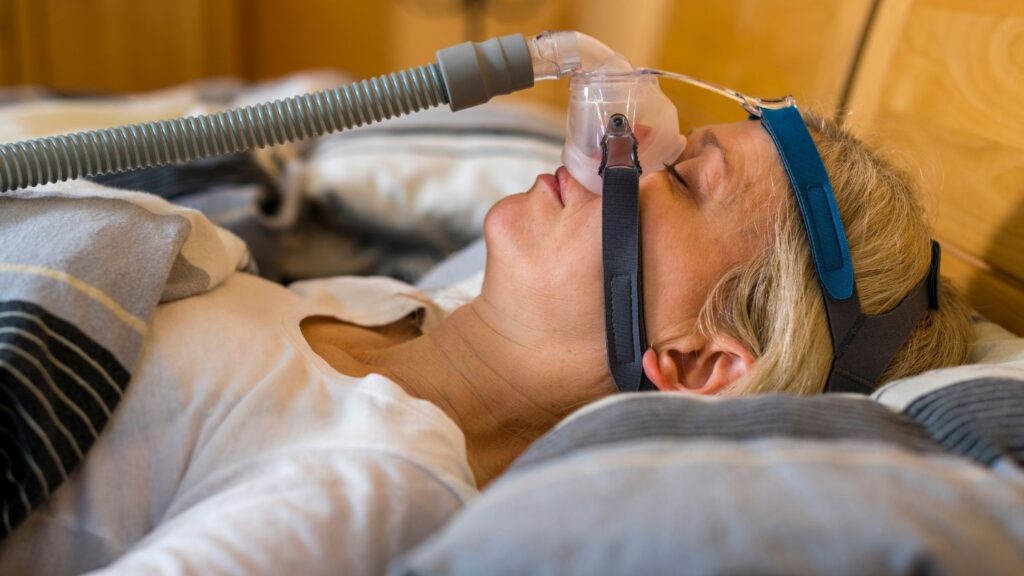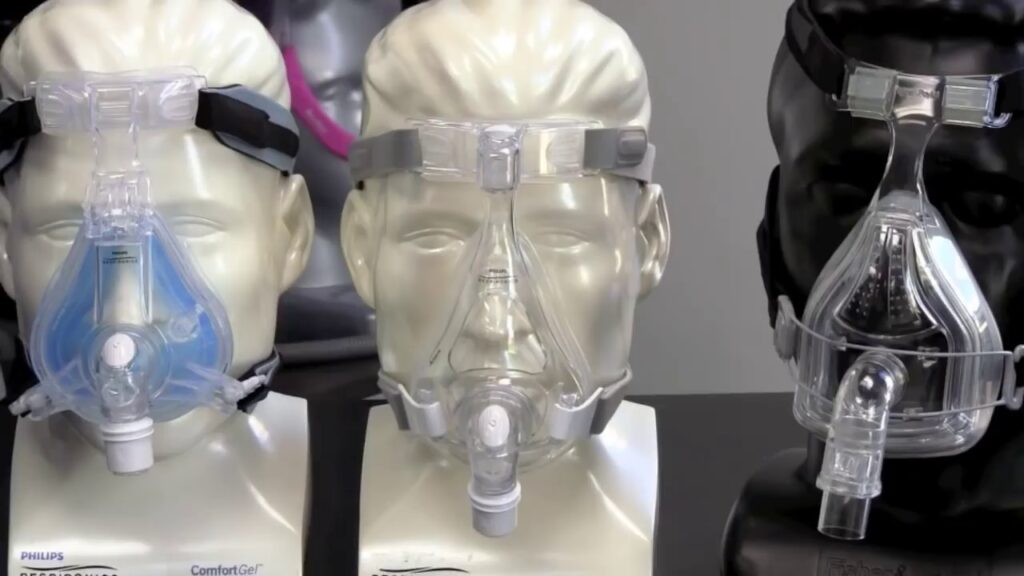The use of humidification can greatly improve the user’s comfort when wearing a CPAP machine, but it also increases the risk of condensation in the hose and water in the mask. When using a heated humidifier, it is not uncommon for water to leak through the CPAP mask and hose, a phenomenon known as CPAP rainout.
Heated humidification helps alleviate dryness and improve compliance for cpap masks users who suffer from nasal congestion, dry nasal passages, sore throats, and nosebleeds.
With an understanding of CPAP rainout and the steps to take to reduce it, those who suffer from sleep apnea can have a better night’s sleep. It’s unpleasant to struggle with moisture in your CPAP mask or equipment, but there are things you may try and lifestyle adjustments you can make to alleviate the problem. Learn more solutions for those still snoring while using CPAP masks.
Keep reading for loads of useful ideas to prevent condensation in CPAP masks if you wake up with water in them.
What Exactly Is CPAP Rainout, and What Causes It?
When moisture enters a cold tube, condensation forms and causes the CPAP to “rain out.” Then, a few waters drop form and splash against your face, rousing you from sleep. You can compare the accumulation of water in your CPAP tubing to the condensation that forms on an old window in a warm room on a cold day or on a chilled can of pop left in the sun on a hot day.

When the air in your CPAP hose cools down, rainout occurs. Condensation is more likely to form if the humidifier’s air is warmer or if your bedroom is cooler. You are nearly certain to experience CPAP rainout if you use the humidifier at its maximum setting. Fortunately, there are measures you can take to prevent or lessen the severity of CPAP rainout.
Is there a way to keep moisture out of the CPAP mask and hose?
To prevent CPAP rainout, it’s essential to keep the tubing’s inside and exterior temperatures as similar as possible. Water buildup in the CPAP hose can be avoided by using a hose cover or adjusting the humidifier settings.
Antidotes for CPAP Rainout
If your CPAP machine or tubing makes noises during the night, you may wake up feeling exhausted even if you get a full night’s rest. Those who suffer from sleep apnea should take measures to ensure they have the best night’s sleep possible, which includes avoiding rainout.
If you want to sleep better tonight, try these six effective strategies:
Use a Heated CPAP Tube
The heated tubing of a CPAP system is designed to maintain the air temperature constant from the humidifier to the mask, so minimising the risk of condensation and dripping that can occur otherwise.
Heated tubing is an option for many well-known CPAP machines, and many manufacturers provide it. For example, the ClimateLineAir Heated Tube is available for the AirSense 10 and AirCurve 10 machines, and the Heated Tube is available for any DreamStation machine. Visit https://www.tga.gov.au/resources/artg/316054 hybernite rainout control system with heated breathing tube.
The non-condensing ClimateLineAir CPAP hose is one of the best solutions because it limits rainout and allows freedom of movement during sleep.
Insulate the Air in Your Hose by Wrapping It
Wrapping your CPAP hose in a tube cover is another great way to prevent rainout due to your bedroom’s temperature. To keep the hose even warmer, you can run it underneath your sheets. Having the proper CPAP hose attachments can do a lot to keep you from experiencing CPAP rainout and can aid in your ability to maintain sleep.
Modify the Humidifier’s Settings
Getting your CPAP humidifier set up correctly might be a game changer. In most cases, a humidity level of three is ideal for CPAP devices. Adjusting the CPAP settings in 0.5 increments can help with rainout concerns, but you should see your doctor before making any changes.
You should consult your equipment provider to determine the optimal humidifier temperature before beginning CPAP therapy.

Change Your CPAP Machine’s Location
Put gravity to good use. Maintain a dry mask by positioning your CPAP machine below your bed. You should consider relocating your CPAP machine from your nightstand to a lower shelf, or even the floor. If condensation does occur, any resulting droplets will be reabsorbed by the humidifier rather than splashing your face.
Tweak the Room Temperature
As was previously discussed, CPAP rainout is caused by a temperature disparity between the air in your tubing and your bedroom. Condensation in your tubing is more likely to occur if you maintain your bedroom at an extremely low temperature at night.
This is a simple solution, however some individuals sleep better in cooler environments, so you can try adjusting the humidity instead.
Try to Find Equipment that Can Make Changes on Its Own
Your CPAP mask will be replaced after 90 days, and your machine every 5 years, by most insurance providers. Five years is a long time in the world of sleep apnea, but a lot may happen in that time, including advancements in technology and the introduction of smart features.
For example, ResMed’s S9 and Air Solutions CPAP machines have humidity settings that can be adjusted automatically to keep you comfortable. There is a particular climate control feature that keeps tabs on the air temperature within your mask and how it compares to the outside air.
It automatically changes the humidifier and tube levels to maintain a comfortable temperature, reducing the likelihood of CPAP rainout, as needed.
Concluding Remarks
If you suffer from sleep apnea, getting a good night’s rest might be difficult even with treatment (such as a CPAP mask and machine). Consistency is key because sleep apnea can cause major consequences if left untreated, despite the fact that some people experience bloating and others have skin irritation.
We encourage you to consult our CPAP solutions guide if you are still experiencing difficulties with your CPAP mask, machine, or humidifier.
Many persons who suffer from sleep apnea argue that the potential advantages of using moisture in conjunction with their CPAP mask/ equipment exceed the risks of CPAP rainout, especially considering the fact that there are ways to lessen the likelihood of nighttime disturbances.

